We aren't going to beat around the bush: Since its introduction in 2013, the Honda CRF250L hasn't lit the dual-sport world on fire. Its mellow-mannered power, soft suspension, and considerable weight for a dual sport bike had us preferring to ride more dirt worthy street-legal bikes when we needed a plate. But we hadn't really got the whole picture until yesterday.
The CRF250L's problem is not so much the bike itself, but one of perspective which is partly Big Red's fault and partly our own. Honda is to blame for making the bike look too much like the CRF-Rs, because that's what they did. The bike looks like a full on dirt bike which then leads us to expect full-on dirt bike performance. The part that's our fault is that we tend to forget the CRF250L's price (a very budget friendly $5,149) and that its pedigree is from the street, with the engine and even some other parts coming from the CBR250R sport bike.
CRF250L Keeping those things in mind we can get to the changes Honda made to the CRF250L then move on to what we really want to talk about, the CRF250L Rally, which has the same changes and a few more. The standard CRF-L received a larger throttle body (38mm, up 2mm), reshaped air boot (100mm longer connecting tube), went from a three-stage to a two-stage muffler making it smaller/lighter, larger header diameter (10mm to 38mm), and smaller roller rocker arm design.
As you might guess, Honda wanted to let the little DOHC, four-valve engine to breath a bit more and we would say that they were relatively successful. In all fairness we haven’t had one in our test fleet since the original four years ago but the power output, while still very tame, seemed a little less tame than the ’13 model. The power still has a very street-bike-like linear output that is great for new or mellow riders. However, it lacks excitement and is devoid of any manner of snap or pop required for serious trail riding. A nice feature is that there is now a tach on the dash so you can make sure visually that you aren’t being overly abusive to the motor. Since it came from the street, the engine is actually happy to rev out further than you would expect – this is a saving grace when getting into steep and/or particularly loose terrain.
Suspension and handling are the same as we remember which is to say comfortable, soft, and easy going. There are no clickers to adjust so if you need to make changes you’ll have to take it to your suspension guy. Right off the bat we’d like to see both front and rear much stiffer since we would easily bottom out landing from a small water-bar jump. We can praise the CRF250L’s balance and say that front-to-rear the bike is level and the suspension works in unison to handle small chop, small rocks, and even bigger obstacles when taken at in first gear. The weight of the bike shows up when you want to make quick direction changes at any kind of clip, but when we slowed down and rode at a milder pace the bike didn’t want to push through turns as much. In the semi-technical sections of the intro, the CRF-L actually works well in first gear handling wise because of the generous steering locks, low center of gravity, and the fact that most people can flat-foot at will.
CRF250L Rally While the standard version still gives us the impression that it is a slightly awkward street bike in off-road attire, the CRF250L Rally gives us an entirely different impression. The Rally feels like the 125 of Adventure bikes. We'll explain that later, but first the differences between the standard and Rally bike. Most noticeable are the shrouds, bigger tank (2.7 gal. from 2.1), and frame-mounted wind screen/light/dash (meaning it doesn't turn with the bars). Performance wise, we were happy to see the suspension got some attention with a 30mm longer fork and new link and connecting rod out back. Both give the Rally more travel and ground clearance, but the valving and springs are the same as the standard model.
Back to the 125 of Adventure bike feel. When hopping on the Rally, we got into a totally different mindset mostly because of the looks and the new instrument tower/windscreen. When we started to think about the bike in that perspective, as an ultra-light ADV machine, we started having a blast. It sounds crazy, we know, but when we were riding the Rally version, we started thinking about all of the adventure bikes we’ve ridden and how light this bike feels and how easy it is to turn and how small it is compared to those much larger machines. Then you notice that the windscreen and shrouds actually make the road and highway sections much nicer, the amount of fuel in the tank is less of a worry, and that you’d have no problem picking this machine up if your bravery outweighed your skill. Does the power compare to those 1000cc-plus machines? Not in the least bit, but, and this is a big but, in our experience while riding massive ADV bikes in the dirt we didn’t even come close to using half the power we had on tap and we had to learn a different language to turn off all the computer aided systems that try to make those huge machines controllable in the dirt. You can buy the CRF250L Rally or the standard version with ABS if you want, but we turned it off immediately and if given the choice would have ridden the non-ABS version.
The suspension has the same uber-plush ride that the standard CRF-L has, yet the increased ground clearance and travel was appreciated on some seriously chewed up, rain-rutted dirt roads. In fact, some of the rut crossings might have been too steep and abrupt for heavier, bigger adventure bikes. We still bottomed the fork when landing from little trail jumps but it took a little longer to get to the bottom.
To Rally Or Not To Rally Hands down, we like the Rally better. The wind screen, skidplate, and fairing add comfort and protection without any draw backs in the dirt, bigger tank means longer rides, and more suspension means we can be a little bit more rowdy. We'd say the CRF250L is the way to go if you want to spend even less money, you want to ride local dirt road and two track at a sightseeing pace, and you want a street legal commuter and/or campground bike. The CRF250L Rally is for those of you out there that have, or ever have had, a desire to do some adventure bike riding but was intimidated by the size, investment, or weight of other adventure bikes. You can buy 3.2 of these Rally models for what a BMW 1200 GS Adventure cost. As people that have ridden both, we'd take the Rally almost any day over a full-size ADV machine.











/cloudfront-us-east-1.images.arcpublishing.com/octane/WRFJDZN4K7WJWBHBWEFXJVEP6Y.jpg)
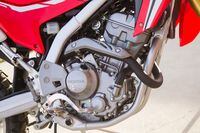
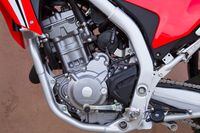
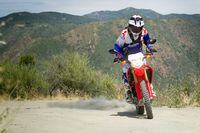

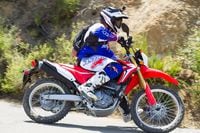
/cloudfront-us-east-1.images.arcpublishing.com/octane/EJSCJUN3XQGAT3BUUXQBXKKFLI.jpg)
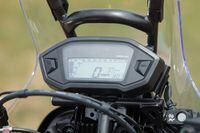
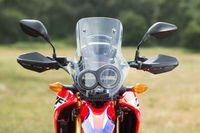
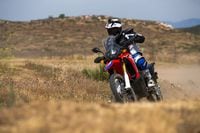
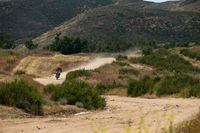
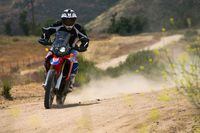
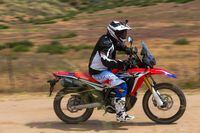
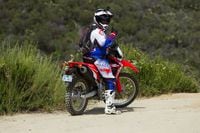
/cloudfront-us-east-1.images.arcpublishing.com/octane/TNOU5DNE2BC57MFPMGN2EIDXAM.jpg)
/cloudfront-us-east-1.images.arcpublishing.com/octane/GTCXACQGJ5HAPDTGWUQKDEH44E.jpg)
/cloudfront-us-east-1.images.arcpublishing.com/octane/S35YGSEMEZB4BLTDJTSZPF4GLA.jpg)
/cloudfront-us-east-1.images.arcpublishing.com/octane/5UOT6HPX2JFMRJAX6EH45AR4MQ.jpg)
/cloudfront-us-east-1.images.arcpublishing.com/octane/OKWOJWAKP5EP3OACCRRWPCIX2Q.jpg)
/cloudfront-us-east-1.images.arcpublishing.com/octane/2WF3SCE3NFBQXLDNJM7KMXA45E.jpg)
/cloudfront-us-east-1.images.arcpublishing.com/octane/G4MG6OUCJNBSHIS2MVVOTPX65E.jpg)
/cloudfront-us-east-1.images.arcpublishing.com/octane/IIGGWFOTOJGB7DB6DGBXCCMTDY.jpg)
/cloudfront-us-east-1.images.arcpublishing.com/octane/QSTCM6AVEZA5JJBUXNIQ3DSOF4.jpg)
/cloudfront-us-east-1.images.arcpublishing.com/octane/U4I7G625B5DMLF2DVIJDFZVV6M.jpg)
/cloudfront-us-east-1.images.arcpublishing.com/octane/B6XD6LS6IVCQPIU6HXDJSM3FHY.jpg)
/cloudfront-us-east-1.images.arcpublishing.com/octane/ICL63FEDDRDTTMINYICCEYGMDA.jpg)
/cloudfront-us-east-1.images.arcpublishing.com/octane/FCGZHQXRBZFLBAPC5SDIQLVF4I.jpg)
/cloudfront-us-east-1.images.arcpublishing.com/octane/WNOB6LDOIFFHJKPSVIWDYUGOPM.jpg)

/cloudfront-us-east-1.images.arcpublishing.com/octane/X33NU3E525ECRHXLNUJN2FTRKI.jpg)
/cloudfront-us-east-1.images.arcpublishing.com/octane/6KKT5NNL2JAVBOXMZYS5ZO76YA.jpg)
/cloudfront-us-east-1.images.arcpublishing.com/octane/J5RKG5O455GMPGQRF2OG6LRT7A.jpg)
/cloudfront-us-east-1.images.arcpublishing.com/octane/GX2CIZKQVRH2TATDM26KFG2DAE.jpg)
/cloudfront-us-east-1.images.arcpublishing.com/octane/ZWIDYSAKQZHD5BHREMQILXJCGM.jpg)
/cloudfront-us-east-1.images.arcpublishing.com/octane/CYUHJZCTSJCH3MRAQEIKXK7SCQ.jpg)
/cloudfront-us-east-1.images.arcpublishing.com/octane/LKOFINY56FCXJCANJ5M7ZDQUBY.jpg)
/cloudfront-us-east-1.images.arcpublishing.com/octane/4NBPDACMWJH63JQYJVK3QRBDZI.jpg)
/cloudfront-us-east-1.images.arcpublishing.com/octane/KKHQHRR3FJGX7H2IPU6RALMWG4.jpg)